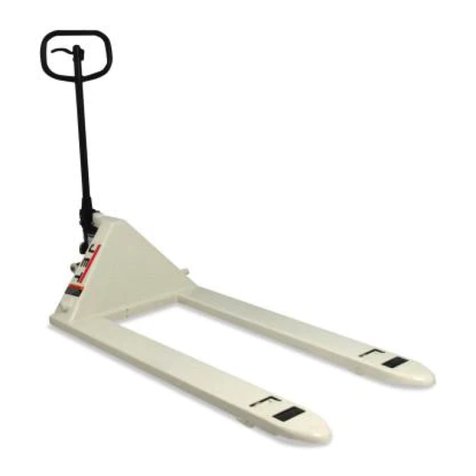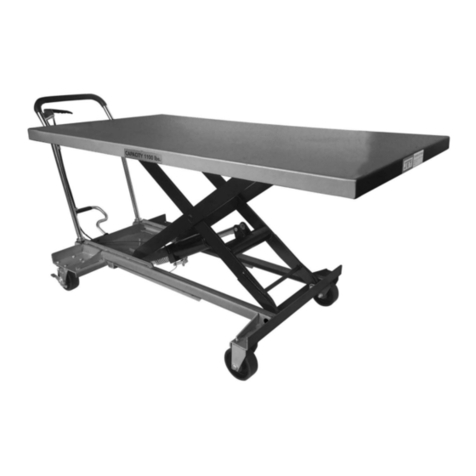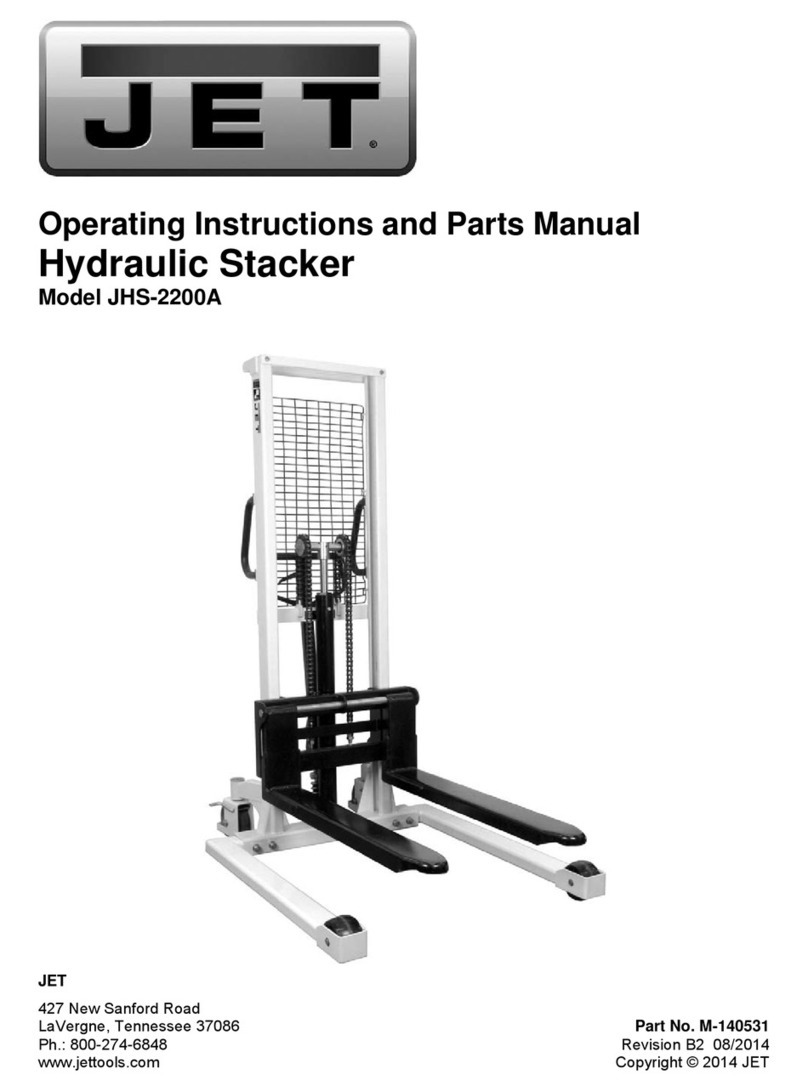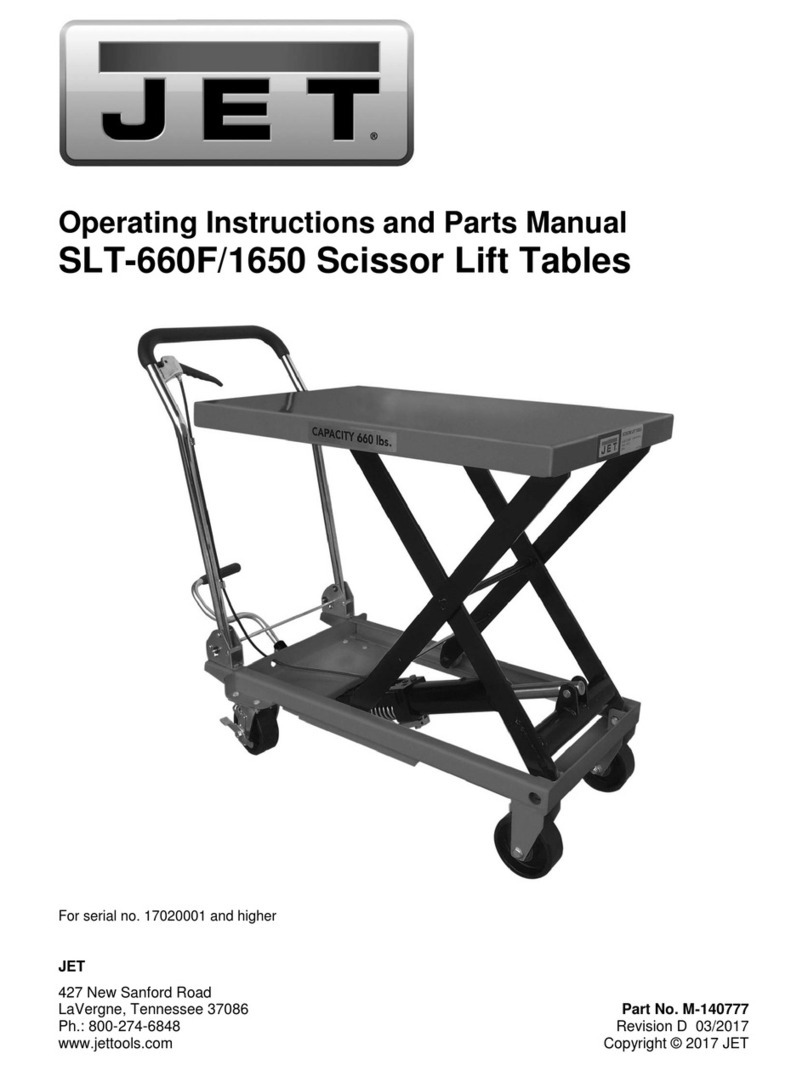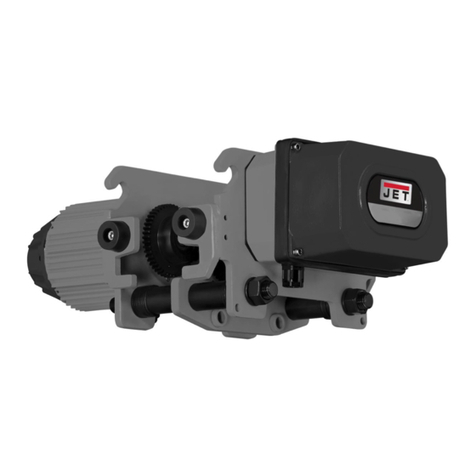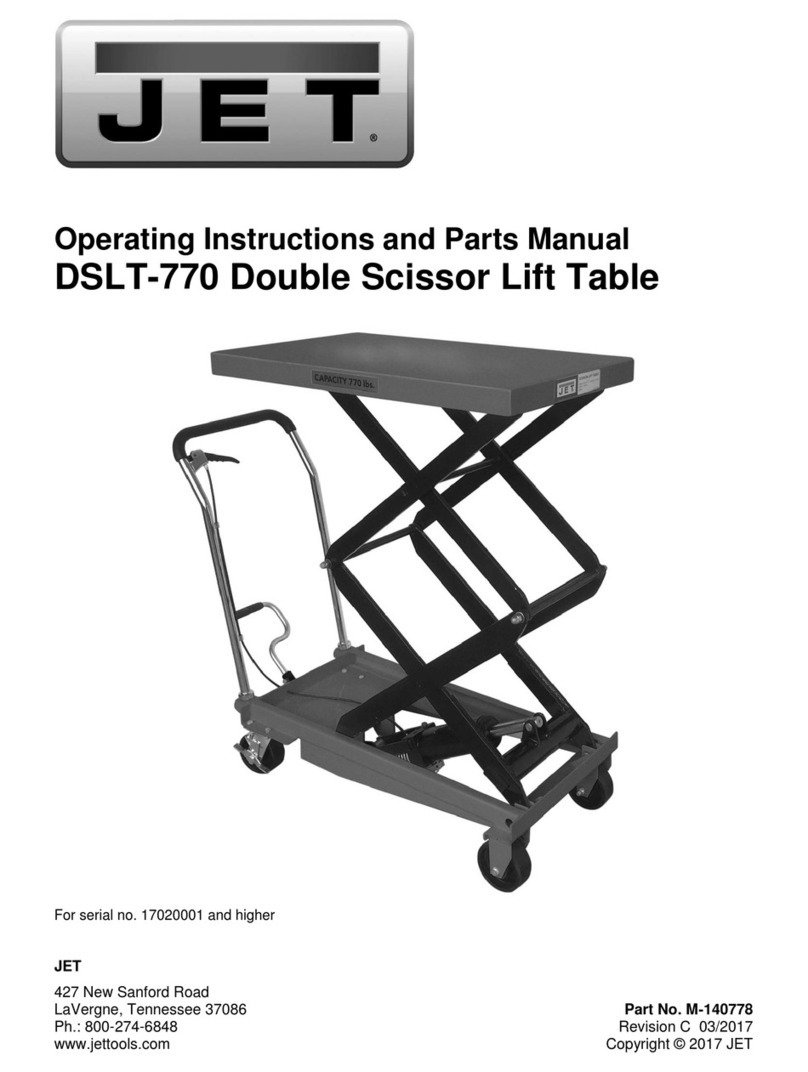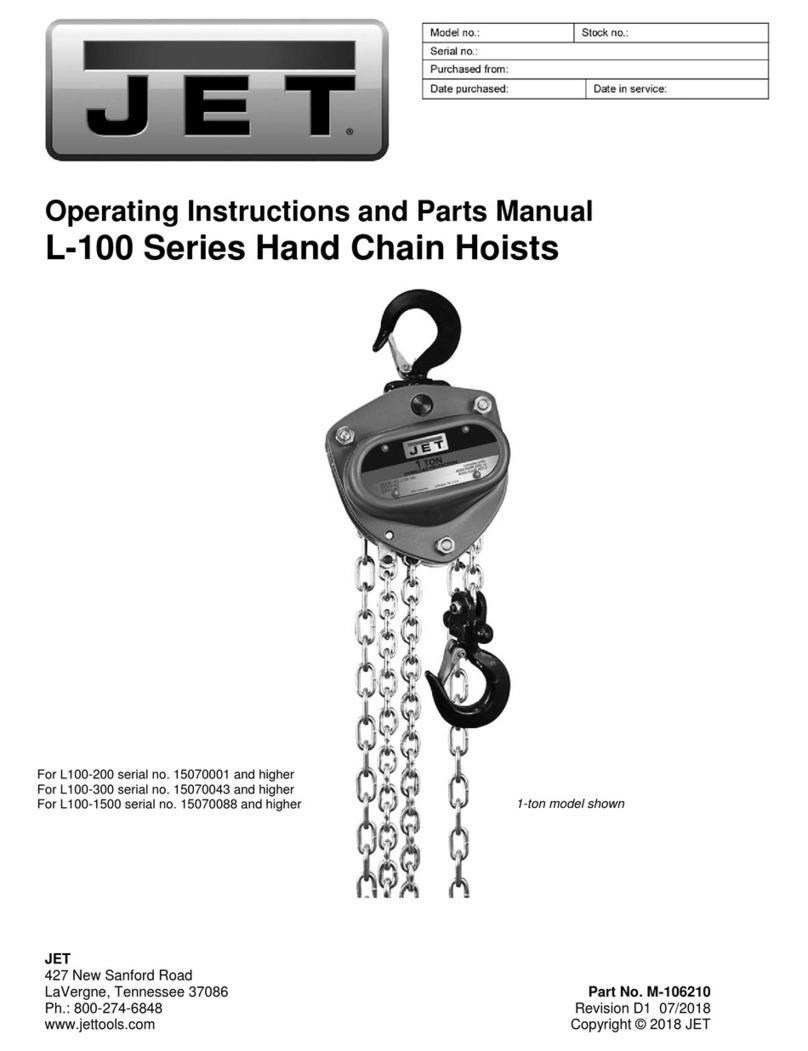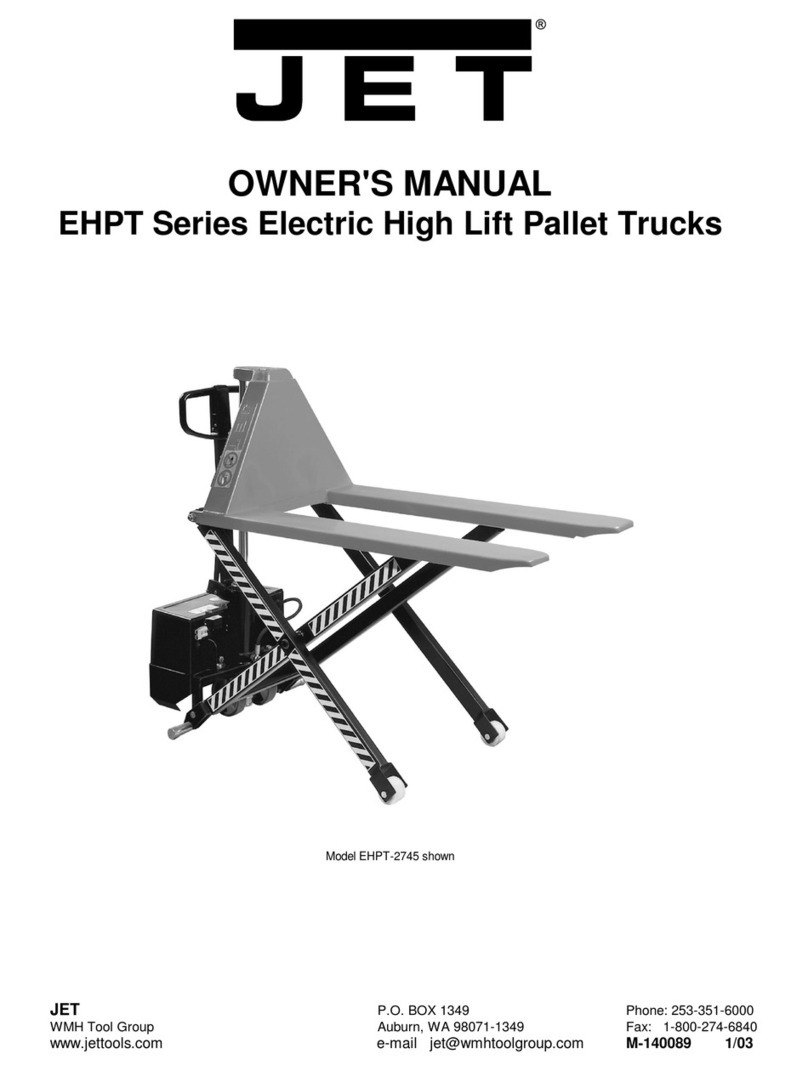
TABLE OF CONTENTS
WARRANTYPOLICY ................................................................ 1
INFORMATIONFORYOURSAFETY...................................................... 1
PRIORTOINSTALLATION............................................................. 2
SAFETYPRECAUTIONS .............................................................. 2
INSPECTIONANDMAINTENANCE ...................................................... 3
HOOKS........................................................................... 4
CHAIN ........................................................................... 5
PARTSBREAKDOWN ................................................................ 6
ONE YEAR LIMITED WARRANTY
JET™ Manual Hoists are guaranteed to be free of defects in material and workmanship. If one of these products fails during the
first year of operation due to defective material or workmanship it will be repaired or replaced at our discretion. Normal wear and
tear on moving parts is excluded from this guarantee. This guarantee does not apply to any product showing signs of misuse,
overloading, alteration, or improper maintenance.
WARRANTY PROCEDURE
After receiving authorization from one of the offices listed below, any product for which there is a warranty claim must be
returned prepaid to an authorized JET™ warranty depot along with proof of purchase.
Addresses for information on JET™ Material Handling products, warranty depots or distributors:
Vancouver Edmonton Winnipeg Toronto Montreal Halifax
3260 Production Way 4120 - 78 Avenue NW 1326 Border Street 6830 Rexwood Road 4620 Rue Garand #123-11 Morris Drive
Burnaby, B.C. Edmonton, Alberta Winnipeg, Manitoba Mississauga, Ontario St-Laurent, Quebec Dartmouth, Nova Scotia
V5A 4W4 T6B 3M8 R3H 0M8 L4V 1L8 H4R 2A2 B3B 1M2
Tel: (604) 444-4336 Tel: (403) 468-1618 Tel: (204) 632-6970 Tel: (905) 677-2103 Tel: (514) 332-4612 Tel: (902) 468-8324
Fax: (604) 444-9227 Fax: (403) 466-9879 Fax: (204) 694-9534 Fax: (905) 677-8008 Fax: (514) 332-4777 Fax: (902) 468-3461
INFORMATION FOR YOUR SAFETY
It is the responsibility of the owner/user to install, inspect, test, maintain, and operate these hand chain hoists in accordance with
ASME B30.16, Safety Standard for Overhead Hoists.
These general instructions deal with the normal installation, operation and maintenance situations encountered with the hand chain
hoists described herein. The instructions should not be interpreted to anticipate every possible contingency or to anticipate the final
system or configuration that uses these hand chain hoists.
These instructions include information for a variety of hand chain hoists. Therefore, all instructions and information may not
apply to one specific hand chain hoist. Disregard those portions of the instructions that do not apply.
If the hand chain hoist owner/user requires additional information, or if any information in these instructions is not clear, contact
your local JET ™ chain hoist distributor.
This hand chain hoist should not be installed, operated, or maintained by any person who has not read all the contents of these
instructions, and ASME B30.16, Safety Standard for Overhead Hoists. Failure to read and comply with these instructions or any
of the warnings or limitations noted herein can result in serious bodily injury or death, and/or property damage.
Only trained and qualified personnel shall operate and maintain this equipment.
Equipment described herein is not designed for, and should not be used for lifting, supporting, or transporting people.
User should not use this hand chain hoist in conjunction with other equipment unless necessary and/or required safety devices
applicable to the system are installed by the user.
Modifications to upgrade, rerate or otherwise alter these hand chain hoists shall be authorized only by the original equipment
manufacturer or qualified professional engineer. 1












